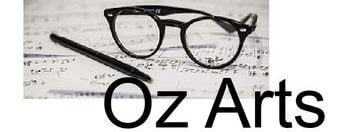Perth Concert Hall
reviewed by Neville Cohn
It doesn’t take long to determine why listening to the Kronos String Quartet is so singularly different to the performances of just about any other high-level, similarly constituted ensembles. The latter tend to specialise in offering beautifully played standard repertoire by, say, Schubert, Mozart or Brahms, music that lulls us with familiar, much-loved sounds, compositions one comes to as if to old and trusted friends. And even more recent, flintier works such as those by Bartok or Shostakovich are welcomed by some who think they are very up-to-the-minute for listening to what some think of, still, as rather daring new music even though most of it has been around for years.
But those who’ve experienced the Kronos Quartet will know that its interpretative approach is often strikingly different to that adopted by its more sedate counterparts. Even to music couched in relatively gentle terms, the Kronos players bring an intensity of expression that jolts the listener into high-level awareness. It’s the equivalent of poking a finger into a live electric socket.
It is absolutely impossible to ignore a Kronos presentation. No one sleeps through its programs. Love them or hate them – and I’m sure there are more than a few who are deeply affronted by the Kronos’ invasion of their comfort zones – they are a force to be reckoned with. You are compelled to pay it the closest attention as in this ninety-minutes-long presentation of works played without interruption, musicmaking that drags the listener, willing or otherwise, into that unique, startling, often abrasive and sometimes repellent sound-universe that is the preserve of musicians who have delighted, awed – and outraged – concertgoers for a generation.
On present form, they generate as much energy as ever. Time has not noticeably touched their physical command of their instruments; it is as complete as ever. Their adventurousness, their willingness to go the extra thousands kilometres in search of the new, the untried, the barrier-breaking, is as keen as it ever was.
Much has been made of the visual aspect of many of Kronos’ concerts. But its necessity, let alone its worth, is debateble. Unlike a work such as Tan Dun’s Water Passion where the visual dimension is so integral to the whole that without it, the piece would be seriously weakened as an entity, the images and fancy lighting that come with the Kronos package could, I believe, be entirely omitted without significant loss of impact. The test is simple: listen to some of it with eyes closed; the effect of the music, I suggest, is not one whit lessened by abandoning the visuals.
A fleeting glimpse of Bugs Bunny, the outline of what resembled the Enola Gay on its way to Hiroshima with its hideous cargo or minutes of watching swinging pendulums on a screen did not to any extent that I could judge make an iota of difference to the overall experience. Neither did the lighting which ranged from cool blue to lurid red – or what seemed to be scaffolding for wigwams. Nor was there any noticeable change in performance quality whether the quartet played in front of – or behind – a gauze-look screen.
Compilation-wise, this was rich pickings for those seeking striking variety of sound, mood or technical procedure. Here, the Kronos’ offerings ranged from Nancarrow’s 1942 opus Boogie Woogie #3A with its violently manic, hepcat beat to Scott Johnson’s How it Happens in which we hear a voice declaiming “nothing more unholy than holy war”.
John Zorn’s Cat O’Nine Tails is intriguing fare, too, seemingly geared to what we’re often told is the worrying decrease in humankind’s attention span, music that veers crazily every ten seconds or so from one style to another – a snatch of square dance music, a burst of barbaric magnificence before a soupcon of sentimental soulfulness that ushers in a blast of harsh dissonance that sets the teeth on edge.
Here, as throughout, the sound of the Kronos ensemble is electronically altered, tonal metamorphoses that come cheek by jowl with rarely encountered timbres such as that of the otherworldly theremin which gives to Bernard Herrmann’s music for cult movie The Day the Earth Stood Still a sound dimension that’s now almost a cliché in movies about alien visitations.
Copyright 2005 Neville Cohn
